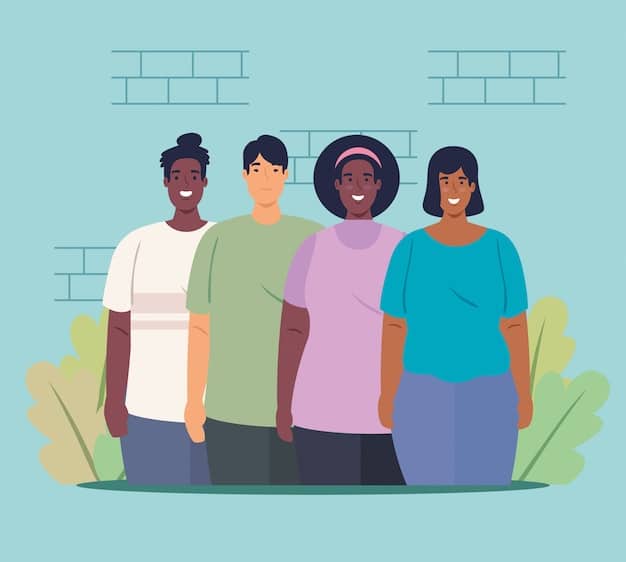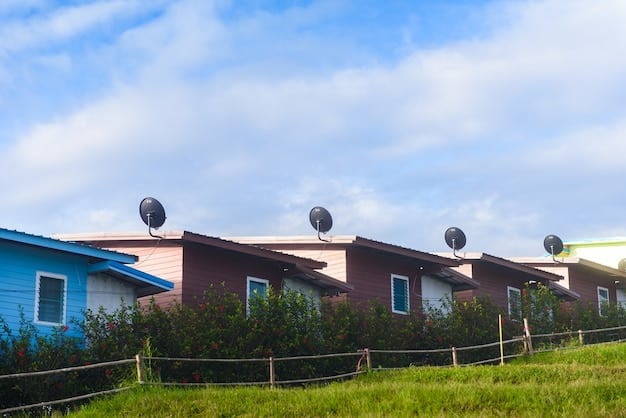Government Programs for Low-Income Individuals: A Complete Guide

Government Programs for Low-Income Individuals: Accessing Food, Housing, Healthcare, and Financial Assistance provide crucial support for those struggling to meet basic needs, offering a safety net through various initiatives designed to alleviate poverty and improve living standards.
Navigating the landscape of Government Programs for Low-Income Individuals: Accessing Food, Housing, Healthcare, and Financial Assistance can be daunting, but understanding the available resources is essential for securing support when it’s needed most. This article serves as a comprehensive guide to help you access vital assistance.
Understanding Government Assistance Programs
Government assistance programs are designed to provide a safety net for individuals and families with limited financial resources. These programs offer support in various areas, including food, housing, healthcare, and financial assistance, to help alleviate poverty and promote self-sufficiency.
The Role of Government Assistance
Government assistance plays a crucial role in ensuring that basic needs are met for vulnerable populations. These programs aim to reduce poverty, improve health outcomes, and provide opportunities for economic advancement. They are funded by taxpayer dollars and administered by federal, state, and local agencies.
- Food assistance programs help individuals and families afford nutritious meals.
- Housing assistance programs provide affordable and safe housing options.
- Healthcare assistance programs ensure access to medical care for those who cannot afford it.
- Financial assistance programs offer direct cash payments or tax credits to help with expenses.
Eligibility for these programs is typically based on income, household size, and other factors. The specific requirements vary by program and location. Understanding the eligibility criteria and application processes is essential for accessing the support you need.

Accessing Food Assistance: SNAP
The Supplemental Nutrition Assistance Program (SNAP), formerly known as food stamps, is a federal program that provides food assistance to low-income individuals and families. SNAP benefits help recipients purchase groceries and other food items, ensuring access to nutritious meals.
Eligibility for SNAP
To be eligible for SNAP, you must meet certain income and resource requirements. These requirements vary by state, but generally, your household income must be below a certain percentage of the federal poverty level. Additionally, you may be subject to work requirements and other eligibility criteria.
- Income limits: SNAP eligibility is typically based on gross monthly income and net monthly income.
- Resource limits: Some states have resource limits, which restrict the amount of assets you can have to qualify for SNAP.
- Work requirements: Able-bodied adults without dependents may be required to work or participate in job training to receive SNAP benefits.
To apply for SNAP, you will need to provide documentation of your income, expenses, and household information. The application process typically involves completing an application form and attending an interview with a SNAP caseworker. If approved, you will receive an Electronic Benefit Transfer (EBT) card, which can be used to purchase groceries at authorized retailers.
Securing Housing Assistance: HUD Programs
Affordable housing is a fundamental need, and the Department of Housing and Urban Development (HUD) offers several programs to help low-income individuals and families secure safe and stable housing. These programs include public housing, Housing Choice Vouchers (Section 8), and other rental assistance initiatives.
Public Housing
Public housing is government-owned housing that is rented to low-income families at affordable rates. Public housing units are managed by local housing agencies and are available in various types, including apartments, townhouses, and single-family homes. Rent is typically based on a percentage of the tenant’s income.
To apply for public housing, you must contact your local housing agency and complete an application form. There may be a waiting list for public housing, so it’s important to apply as soon as possible. Eligibility is based on income, household size, and other factors.

Housing Choice Vouchers (Section 8)
The Housing Choice Voucher Program, also known as Section 8, provides rental assistance to low-income families, the elderly, and people with disabilities. Participants in the program receive a voucher that they can use to rent a home in the private market. The voucher covers a portion of the rent, and the tenant pays the remaining amount.
- Voucher amount: The amount of the voucher is based on the local market rent and the tenant’s income.
- Landlord participation: Landlords must agree to participate in the program and meet certain housing quality standards.
- Tenant responsibilities: Tenants are responsible for finding a suitable rental unit and complying with the terms of the lease.
Navigating Healthcare Assistance: Medicaid
Medicaid is a joint federal and state government program that provides healthcare coverage to low-income individuals and families. Medicaid covers a wide range of medical services, including doctor visits, hospital care, prescription drugs, and mental health services. Eligibility for Medicaid varies by state, but generally, it is based on income and household size.
Medicaid Benefits and Services
Medicaid offers comprehensive health coverage to eligible individuals and families. Benefits typically include:
- Preventive care: Regular checkups, vaccinations, and screenings
- Doctor visits: Access to primary care physicians and specialists
- Hospital care: Inpatient and outpatient hospital services
- Prescription drugs: Coverage for medications prescribed by a doctor
- Mental health services: Counseling, therapy, and treatment for mental health conditions
To apply for Medicaid, you must contact your state’s Medicaid agency and complete an application form. You may be required to provide documentation of your income, resources, and household information. If approved, you will receive a Medicaid card, which you can use to access healthcare services.
Exploring Financial Assistance Programs
In addition to food, housing, and healthcare assistance, the government also offers various financial assistance programs to help low-income individuals and families meet their basic needs. These programs may include cash assistance, tax credits, and other forms of support.
One of the main financial assistance programs is the Temporary Assistance for Needy Families (TANF):
- TANF: Provides temporary financial assistance to families with dependent children.
- Tax Credits: The Earned Income Tax Credit (EITC) is a refundable tax credit for low- to moderate-income working individuals and families.
Eligibility for these programs varies, but generally, it is based on income, household size, and other factors. To apply, you will need to contact the administering agency and complete an application form. Be prepared to provide documentation of income and expenses.
Additional Resources and Support
In addition to the major government assistance programs, there are many other resources and support services available to low-income individuals and families. These resources may include:
- Community action agencies: Offer a range of services, including energy assistance, housing counseling, and job training.
- Food banks: Provide free food to individuals and families in need.
- Charitable organizations: Offer financial assistance, clothing, and other support.
It’s important to research and explore all available options to ensure that you are receiving the support you need. Don’t hesitate to reach out to local organizations and agencies for assistance.
| Key Program | Brief Description |
|---|---|
| 🍎 SNAP | Food assistance for low-income individuals. |
| 🏠 HUD Programs | Housing support, including public housing and vouchers. |
| ⚕️ Medicaid | Healthcare coverage for low-income individuals. |
| 💰 TANF | Temporary financial aid for needy families. |
Frequently Asked Questions
▼
The initial step involves researching available programs and determining your eligibility based on income, household size, and specific criteria set by each program. Contacting local agencies can also provide valuable guidance.
▼
SNAP provides financial assistance for purchasing groceries, enabling low-income families to afford nutritious meals. This support helps to alleviate food insecurity and improve overall health outcomes.
▼
HUD’s programs aim to ensure safe, affordable housing for low-income individuals and families. These programs include public housing and vouchers to help people secure stable living environments.
▼
Medicaid is designed for low-income individuals and families who meet specific income and resource criteria. Eligibility varies by state, but it generally ensures access to essential healthcare services.
▼
TANF (Temporary Assistance for Needy Families) offers short-term financial aid to families with dependent children to help cover immediate needs, such as housing, utilities, and other essential services.
Conclusion
Accessing Government Programs for Low-Income Individuals: Accessing Food, Housing, Healthcare, and Financial Assistance can significantly improve the quality of life for those struggling to make ends meet. By understanding the available resources and navigating the application processes, you can secure the support you need to build a more stable and secure future.





